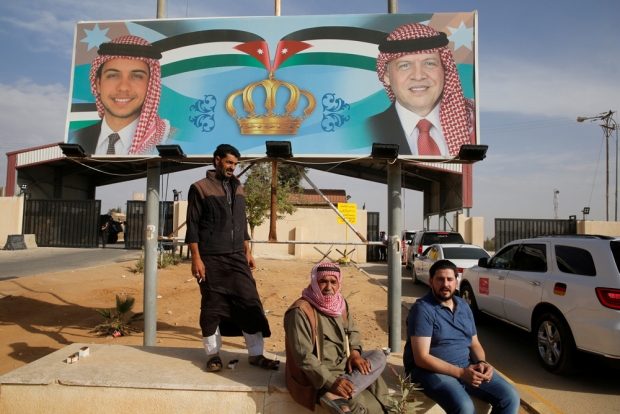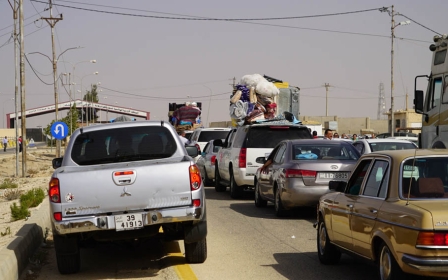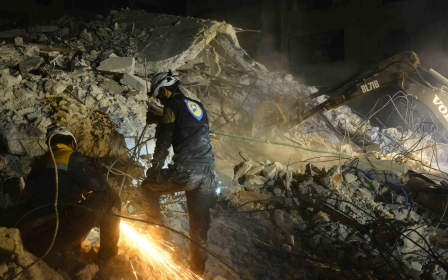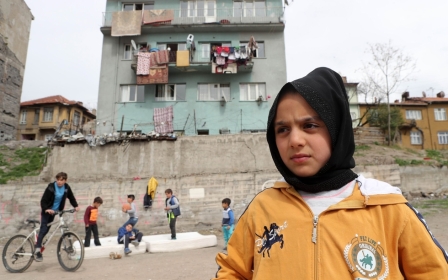Jordanian border opening brings hope but new hardships in war-weary Daraa
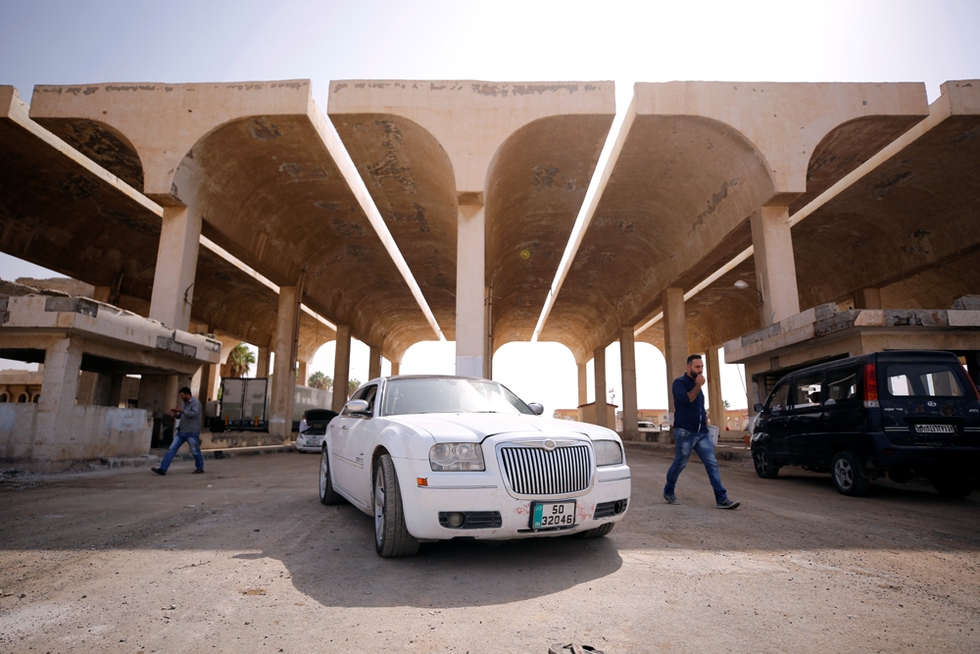
AMMAN: Ahmad* spends his days sitting in a home without windows, which were bombed out during the Syrian government's offensive on opposition-held southern Syria earlier this year.
The 26-year-old used to work for the Syrian Civil Defence, the group of first responders commonly known as the White Helmets. With pro-government forces edging closer to his hometown in the summer, Ahmad decided to stay behind, choosing to reconcile with Damascus rather than ride the government's evacuation buses north to opposition-held Idlib province.
But now, living in fear of government reprisals because of his previous line of work and with no job to go to in the first place, Ahmad no longer leaves the house.
"I sit in my house without any work," he tells Syria Direct. "The house was partially destroyed ... [so] we're trying to restore it with whatever [money] we have."
Ahmad talks about a piece of land, in the countryside outside his town, as a possible way out. "I have some land I'm trying to fix up. Maybe it could be a small source of income for me."
Some in Daraa had pointed to the Syrian-Jordanian border, just a few kilometres south of Ahmad, for a way out of the stagnation.
In October, Syria and Jordan agreed to reopen the Jaber-Naseeb crossing for the first time in three years.
Parking lot
Despite the widespread stories on Jordanian social media of afternoon shopping trips in Damascus' Souq al-Hamidiyah, servees (shared taxi) rides across the border and the supposed return of normality, Syrians on the other side of the border tell a different story.
"Sometimes I feel like Naseeb has just turned into a parking lot for Jordanian cars," Abdullah, one local resident in his 20s tells Syria Direct when describing how his hometown has changed since the reopening.
Naseeb lies along the Syrian stretch of a long international highway that once ran from Turkey to Yemen and is now, partially at least, back in business.
"There is constant traffic from Jordanian cars every day here in Naseeb," Abdullah says. "A lot of people are coming here to do their shopping."
It's a welcome respite for Jordanians living immediately on the other side of the border, where years of recession and economic stagnation, caused in part by Syria's war, have left their mark. Local business owners in northern Jordan say things seem poised to improve.
Store owners and employees alike are finding work again. Jordanian and Syrian officials have also welcomed the opening of the border as a key sign of relations thawing, with a Jordanian parliamentary delegation visiting Syrian President Bashar al-Assad in Damascus last week, reportedly to discuss bilateral trade and transport.
And yet the supposed promise of Naseeb has left many cash-strapped, war-weary Syrians in southern Daraa province mired in rapid inflation and skyrocketing prices.
"There's been a clear, extreme hike in prices - vegetables, meat, olive oil, cigarettes," Abdullah tells Syria Direct from the Syrian side of the border. "For normal people here, the situation is becoming very difficult."
'Nobody thinks of the ordinary citizen'
In July, a massive aerial and ground offensive by pro-government forces backed by Russian airpower recaptured total control of southwestern Syria's Daraa and neighbouring Quneitra provinces.
The offensive saw the Syrian army and allied forces take control of town after town through a combination of military force as well as a series of reconciliation deals designed to pull every-day residents and former rebel fighters back into Damascus' fold.
Thousands, including rebel fighters, opposition officials and NGO workers, evacuated north to evade life under government control.
But the exit of a years-long opposition infrastructure comprising NGOs and civil society groups, local service providers and international aid backers, has now left the local economy in tatters, months after the fighting stopped.
NGOs that once operated under rebel control disbanded, with hundreds of their employees simply going underground, when the government reasserted its authority. As a result, life in the post-reconciliation south has been defined by widespread unemployment and a lack of vital public services.
"In the beginning, I was happy that the crossing would open because [it would mean that] we would go back to seeing other people from another country after being cut off from the world during the war," Ahmad, the former Civil Defence responder, says.
"But for civilians, nothing has changed other than the prices rising. Most of the young men [in Daraa] are just sitting around on account of the huge unemployment in the area."
Rising prices
Several Daraa residents speaking to Syria Direct described rising prices as their main economic worry. As Jordanian shoppers flock to Naseeb and other nearby towns for steep discounts compared with the higher prices back home, residents along Syria's southern border say the prices of staple items have increased by unaffordable margins.
"A sack of flour was 8,300 Syrian lira [$16] and now it’s 11,000 lira [$21]," says Ammar, a father of five from rural Daraa who owns a small convenience store in his town.
The prices of cooking oil and sugar have also increased, he says, with others complaining of the high price of potatoes and other produce, including those grown locally.
"As a storeowner, I'm benefitting from this," Ammar admits, before adding that he's lost a "significant" number of his former Syrian customers.
"Most of my customers are Jordanians since the border reopened."
"The traders sell to Jordanians at high prices, and they don't sell to Syrians to the same degree as before. [People] can't buy what we are selling to the Jordanians," Hassan, the owner of a small local supermarket in Suwayda city, tells Syria Direct.
"Nobody thinks of the ordinary citizen."
'It takes time'
The border that now defines the economic life of Syria's south wasn't always there. The family names, Arabic dialects and tribal connections that link southern Syria and northern Jordan have only been officially separated for around a century, since colonial-era officials drew a line across the Houran Plains.
"You have the same tribal or clan groups on both sides of the border very often," says Aron Lund, a Syria analyst and fellow at The Century Foundation, while the crossing operates as an "artery for Jordanian-Syrian trade and transit that goes through Syria and through Jordan".
Analysts acknowledge that economics on either side of the border have not improved in-step, but could as economic relations continue and Syria's south weathers the immediate post-war period.
"Jordan has achieved more positive benefits than Syria [as a result of] the crossing’s reopening," not least because it can access Syrian "goods and products that are higher quality and cheaper" than from neighbouring countries, Shadi al-Ahmad, a Syrian economist from Damascus, tells Syria Direct.
"Some [Syrians] also have a feeling of injustice because of the crossing ... including the fact that Syrians don't have the right to enter Jordan without security permission from the Jordanian side," whereas Jordanians can cross more easily, he adds.
In late October, Syrian MPs complained of a lack of "reciprocity" in the arrangements for cross-border movements and trade between Syria and Jordan.
"Jordan is betting on Syria a lot through the opening of the Naseeb crossing to revive its economic situation," MP Riyad Ashtewi was quoted as saying by pro-government daily al-Watan, "but this should not be at the expense of Syrian citizens."
'Living off luck'
For now at least, al-Ahmad suggests, the reopening of Naseeb "cannot be considered a major ... boost for the Syrian economy".
That could change, however.
"As a whole, I think both countries will stand to benefit economically," says Lund. "But who benefits more?"
With Syria isolated politically and economically, some benefits may be more forthcoming than others, he says. "There are political costs and there are political gains as well, but economically it's a win."
He adds: "It takes time to get any sort of economy going after a closure."
Ahmad, the former Civil Defense worker, is still looking for a job amid Daraa's stagnant economy.
Sometimes he pins his hopes on that patch of land somewhere outside his hometown. Other times he simply wants to leave the country altogether.
"People here are living off luck," he says. "The days that we can bring food, we eat. The days that we can't, we don't."
* Syria Direct has changed the names of all residents and store owners quoted in this report to protect the identities of sources.
Read the original article on Syria Direct. Follow Syria Direct on Twitter.
New MEE newsletter: Jerusalem Dispatch
Sign up to get the latest insights and analysis on Israel-Palestine, alongside Turkey Unpacked and other MEE newsletters
Middle East Eye delivers independent and unrivalled coverage and analysis of the Middle East, North Africa and beyond. To learn more about republishing this content and the associated fees, please fill out this form. More about MEE can be found here.



